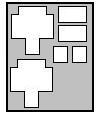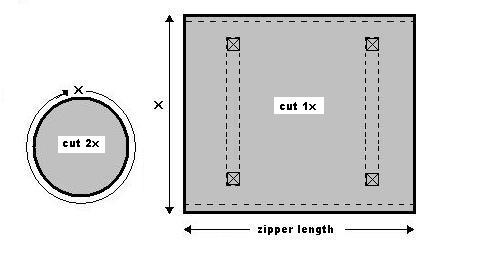 Thin or wide, bright, basic or bejeweled, a belt is an easy way to add polish to any outfit. Here’s how to update your look with the season’s most stylish belt.
Thin or wide, bright, basic or bejeweled, a belt is an easy way to add polish to any outfit. Here’s how to update your look with the season’s most stylish belt.
Cinch Belts are the perfect way to introduce a chic pop of colour, texture or ‘bling’ to any outfit; this waist-wringing item is one of few accessories that can take any outfit up a notch, from fine to fantastic. Cinching a wide belt around the smallest part of your torso – your natural waist – emphasizes and slims this very feminine zone while accentuating sexy curves. Thick belts create the most dramatic, waist-narrowing looks since they brace your body in a corset-like fashion.
Featured: Cinch Belt by Cynthia Rowley
If you want to stand out, get creative and fashion yourself a belt out of leather and suede can be a real joy as they are the oldest and most luxurious of all natural materials. Selecting cowhide, pigskin or lambskin for your leather project will help you to create a fashion accessory that you will cherish for years to come!
You with need:
- Leather or suede hide
- Covered buckle kit
- Leather machine needle
- Rubber cement
- Topstitching thread
- Metal straightedge ruler
- X-acto knife or rotary cutter
- Awl
- Rubber mallet
COVERED BUCKLE FORM

Cut leather 2 times the width of buckle. Fig.1
Trace outline of the topside blank from the buckle kit in the center of leather (wrong side up).
On inner parts of buckle, slash through each center and diagonally into corners at each end. Fig.2
On the wrong side of leather, spread a thin layer of rubber cement.
Allow to become tacky.
Repeat glue-ing directions on face of buckle form.
Center the buckle form face down onto the leather. Smooth the leather.
Fold in edges of leather inside the buckle form with fingers – outer edges with thumb. Carefully trim away any bulk with pointed tips of scissors.
Take backing plate (the smaller piece from the kit) and insert in top portion, pressing well in to secure the leather inside. Fig.3
MAKING THE BELT
1. Choose leather and a buckle kit for your belt.
2. Cut your belt from the leather. The belt should be 1 foot longer than the waist measurement and equal in width to the interior width of the chosen buckle plus 1 1/4″.

Cut the leather using a sharp X-acto knife or rotary cutter and a metal straightedge to do this. DO NOT USE SCISSORS. (I like to use a cutting mat to do the cutting as well).
For the model sample shown,
- Approx. length: S=36″, M=38″, L=40″, from inside edge of buckle to tip.
- Approx. width: 2 1/2″.
- Approx. dimensions: buckle 2 1/4″W x 3 1/2″H.
3. Decide what shape you want the free belt-end to take. You can make it pointed, rounded, square – whatever shape you like. (The model has a squared end). Mark the belt-end and use an X-acto knife to cut it to the desired shape. (Curved shapes may be carefully cut with scissors).
4. Fold the uncut end of the belt back so that a crease is made 1 1/2 inches from the belt end. Using a metal straightedge and an awl, lightly score this line on the back of the leather.
5. Repeat along the perimeter of the belt and score 3/8″ within the edge. Turn in the edge and lightly crease.
 6. Since leather will not fray, use rubber cement to finish the edges. Daub a thin layer of rubber cement ½” wide along the perimeter (wrong side only) and allow the glue to become tacky. Then, carefully fold turning edges and working from the buckle end to the corners. Work the folding in both directions to miter the excess into the corners. Trim the “ears” away. (See diagram). Gently tap along the edges with the rubber mallet.
6. Since leather will not fray, use rubber cement to finish the edges. Daub a thin layer of rubber cement ½” wide along the perimeter (wrong side only) and allow the glue to become tacky. Then, carefully fold turning edges and working from the buckle end to the corners. Work the folding in both directions to miter the excess into the corners. Trim the “ears” away. (See diagram). Gently tap along the edges with the rubber mallet.
7. Topstitch the perimeter of the belt ¼” from the edge. (Use a new leather needle in your sewing machine. Try a walking presser foot or Teflon presser foot to prevent drag. Loosen your tension and increase the stitch length for better results).
8. Insert the buckle end through the slot of the buckle so that the buckle is correctly positioned. Fold the uncut belt end back so that the bucket is face up and lined up with the scored line. Machine stitch the end using double topstitching to secure.
 Featured: Turtle Tote by LIFEwithBIRD
Featured: Turtle Tote by LIFEwithBIRD
 Cut 2 of each piece in fabric.
Cut 2 of each piece in fabric. Center zipper FACE down along opening in seam. Stitch zipper tape to seam allowances.
Center zipper FACE down along opening in seam. Stitch zipper tape to seam allowances. Open zipper and turn out bag through opening. With RST, join A to A and sew across seam, ensuring the straps are caught in the seam. (Be careful not to twist the straps.)
Open zipper and turn out bag through opening. With RST, join A to A and sew across seam, ensuring the straps are caught in the seam. (Be careful not to twist the straps.) Featured: Cloche hat from Banana Republic
Featured: Cloche hat from Banana Republic





